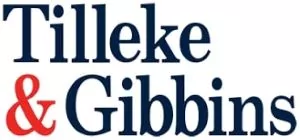Government Regulation No. 28 of 2024 ("GR No. 28") was issued on July 26, 2024, to implement Law No. 17 of 2023 on Health (the "Omnibus Health Law"). GR No. 28 contains extensive provisions on tobacco products and electronic cigarettes in an effort to reduce the health risks associated with addictive substances, decrease the prevalence of smokers, and prevent the initiation of smoking among beginners in Indonesia.
The Indonesian FDA (known as "BPOM") is working to implement the relevant provisions in GR No. 28 and has subsequently issued a draft regulation on the control and distribution of tobacco products and electronic cigarettes. This draft regulation is set to replace current BPOM Regulation No. 41 of 2013, which only covered tobacco products. The new draft regulation, however, also incorporates rules on electronic cigarettes.
This article outlines some of the measures on electronic cigarettes contained in GR No. 28 and the draft implementing regulation, focusing particularly on testing and reporting requirements, sale and pack size requirements, and labeling and advertising requirements.
Testing and Reporting
The draft regulation requires that each variant of electronic cigarettes produced or imported be tested for nicotine content. These tests must be conducted in an accredited laboratory, and the results must be reported to BPOM.
The use of additive materials is prohibited unless they have been proven safe for public health. To enforce this, electronic cigarettes must be tested for the presence of prohibited additives before they are distributed. Additionally, a verification of the content of prohibited additives must be conducted during the distribution period, with the testing and verification being carried out in different laboratories. The results of both tests (i.e., the pre-distribution test and the subsequent verification) must be reported to BPOM.
Sale and Pack Size
GR No. 28 prohibits the sale of electronic cigarettes:
- Via self-service machines;
- To individuals under the age of 21 (an increase over the previous minimum age of 18 years old) or to pregnant women;
- In locations near entrance and exit doors or in high-traffic areas;
- Within 200 meters of children's educational facilities or playgrounds; and
- Through web services, commercial electronic applications, or social media platforms without age verification.
GR No. 28 also establishes pack size requirements for electronic cigarettes. For closed-system or single-use cartridge electronic cigarettes, the liquid nicotine content must not exceed 2 mL per cartridge, and each package cannot contain more than two cartridges. For open-system or refillable electronic cigarettes, liquid nicotine must be sold in 10-milliliter or 20-milliliter containers. For solid electronic cigarettes, there must be 20 sticks per pack.
Labeling
Electronic cigarette labels are required to display health warnings in both text and image format, providing educational information about the risks of smoking. These health warnings must be printed on the package surface as an integral part of the packaging. There are five different required warnings for each variant of electronic cigarette. Each of the five warnings must be equally displayed on all of the electronic cigarette packs for each variant.
The health warning text and images must be displayed on all sizes of electronic cigarette packages. Each package must show one type of health warning, which cannot be obscured by anything else. The warning must meet the following criteria:
- The warning must be displayed on the top portion of the package (horizontal orientation), on both the front and back, covering 50% of the surface area;
- The packaging must include the word "warning" in yellow text that stands out clearly on a black background;
- The image must be printed in color; and
- The font must be Arial Bold, proportional to the package size, with yellow text on a black background.
The draft regulation also requires electronic cigarette labels to include the following information:
- A statement that the product contains nicotine;
- A statement that the product is prohibited from being sold or provided to individuals under the age of 21 or to pregnant women; and
- The production code; date, month, and year of production; and the name and address of the manufacturer.
The label must not contain any misleading information or sign or any promotional wording.
Advertising
GR No. 28 stipulates extensive advertising requirements for electronic cigarettes. Advertising on digital-based social media platforms is prohibited. GR No. 28 also specifies requirements for advertisements placed on websites and commercial electronic applications. requirements for advertisements at point-of-sale locations and via outdoor media, print media, and broadcasting media.
Advertisements on websites or commercial electronic applications:
- Must include a health warning and a statement prohibiting the sale or provision of electronic cigarettes to individuals under the age of 21 and to pregnant women;
- Must not illustrate or suggest that using electronic cigarettes offers health benefits;
- Must not use misleading words or phrases or encourage the consumption of electronic cigarettes,
- Must not depict the use or display of electronic cigarettes or any references that could be associated with the brand;
- Must not feature children, teenagers, or pregnant women in any pictures or text;
- Must not target children, teenagers, or pregnant women;
- Must not use cartoons or animation as advertising characters;
- Must not contradict public norms;
- Must implement age verification to limit access to those 21 years old and above.
Conclusion
Businesses operating in the electronic cigarette industry in Indonesia need to stay vigilant and proactive in response to these new regulatory requirements. Compliance will not only require adjustments in production, packaging, and marketing strategies but also proactive due diligence to avoid potential legal repercussions. Companies should consider conducting comprehensive audits of their current practices and seek legal counsel to ensure full compliance with the evolving regulatory landscape. By doing so, they can better navigate the complexities of these stringent regulations and mitigate risks that could impact their market presence and operational continuity.
The content of this article is intended to provide a general guide to the subject matter. Specialist advice should be sought about your specific circumstances.


